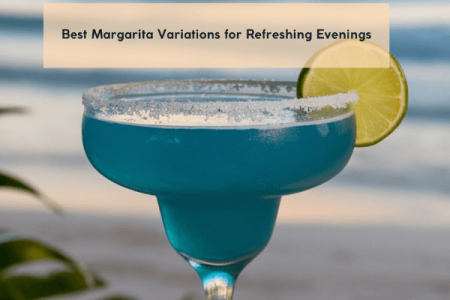The amount of gin drinks consumed worldwide is predicted to reach up to 152.9 million liters over the next five years, capturing a large portion of the market. Gin is frequently linked to innovation, adaptability, and cultural advancement. The beverage has evolved from its original use as a medicine in Holland to become one of the most widely consumed alcoholic beverages in modern times. Thus, read on to learn about the origins of one of the most well-known alcoholic beverages of our day and to sample some intriguing gin cocktails.
The gin beverage, the origins, and history
It is unknown where gin was initially made, and various people have different theories about it. It is known, nevertheless, that this beverage was initially created as a medication during the Middle Ages. The recipe included berries and juniper, for their well-known therapeutic qualities.
Holland’s Genever, a juniper-based beverage, had a significant impact on the evolution of gin.
The Dutch physician Franciscus Sylvius played a significant role in the evolution of gin during the 16th century; he enhanced the beverage’s flavor and elevated its status beyond that of a simple remedy. While traveling, Dutch sailors and merchants brought gin with them to other nations, which also helped spread the concept of gin.
Gin in Great Britain
The spread of gin in Britain was intertwined with political and cultural shifts. Medicinal syrup, genever, gained attention after the accession of the Dutchman William Orange to the English throne. During this period, the government imposed heavy taxes on the importation of alcoholic beverages, as a result of which the locals began to produce their own gin. In the early stages of production, gin was similar to Dutch, and then they integrated their production methods and developed the characteristics of the drink.
During the deregulation of spirits, gin production became widespread. The drink became more affordable and accessible. Two centuries later, in the 18th century, Britain faced an addiction to this drink due to its massive increase in production and consumption. This drastic change was largely related to social issues such as alcoholism and violence.
As a solution, Britain reduced the production and consumption of the beverage, the initial effect of which was not so noticeable. However, in 1751, this law imposed stricter sanctions, that contributed to the decline of gin production.
The gin production in the 19th century
This is how the production of today’s famous gin has developed. Unlike Geneva, modern gin has a simpler composition and lighter and drier taste notes.
The production was further developed when, in the 19th century, machines providing continuous work were invented, which also began to be used in the gin production process. As a result, a drink with a purer composition was created, which was one of the greatest discoveries of the time, as it allowed for the production of the drink loved by everyone in large quantities.
Gin in the 21st century
With further development of the production process, a vast array of distinctive gin cocktails appeared over time. These days, gin is not just a fantastic alcoholic beverage; it's also a key component of many traditional and contemporary cocktails. Negroni, Martini, Gin and Tonic, and more. Gin, then, is also a favorite among connoisseurs of mixed drinks because it makes it possible to create classic cocktails as well as an endless range of new recipes.
The best gin drinks today
Nowadays the love for gin is all over the world, many types that originated from Italy, France, Germany, and of course, The United Kingdom. Here are some of them:
- WINDSPIEL "Van Volxem" Premium Dry Gin: Germany is where the dry drink first appeared. It can be sampled on its own or added to mixed drinks like the Pink Gin Tonic, Cucumber Gimlet, or Green Apple Mule.
- BEEFEATER London Dry Gin: London, United Kingdom is the home of dry gin production. It tastes citrusy with a floral aroma and is suitable to add to the mix for the Gin and Tonic. There are three flavors of this kind of gin: dry, orange, and strawberry.
- MALFY "Gin Rosa": Sicilian pink grapefruits are used to make Italian dry gin, which gives the gin a juicy pink color.
Each type of gin has its characteristics, some types are intended for cocktails, and others can be drunk both separately and as a part of a cocktail.
Conclusion
From a simple beverage to the most popular beverage. Gin is one of the drinks that comes from a rich history that for centuries has witnessed the most diverse stages of development, cultures, and traditions, and in the end, has reached us as the best quality drink to enjoy its extraordinary and influential nature.


















